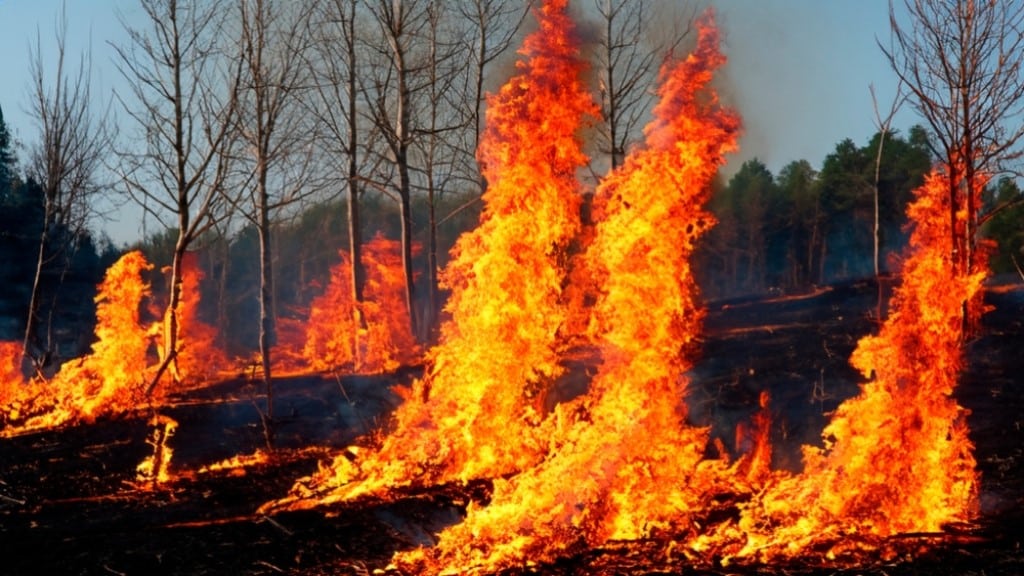The human link to wildfires in Greece and how to reduce risk
- August 1, 2023
- 8:05 am


Iain Hoey
Share this content
Many of the recent wildfires in Greece have been sparked by human activity, the government has claimed.
As the country recovers from a stretch of heatwave-induced blazes, it’s clear that we need a new approach to preventing these disasters.
Greece’s wildfire crisis: a human-made problem
Greece has been battered by 667 fires in recent weeks. Vassilis Kikilias, the Greek minister of climate crisis and civil protection, emphasised: “During this time 667 fires erupted, that is more than 60 fires a day, almost all over the country.”
Shockingly, these fires were mostly “ignited by human hand, either by criminal negligence or intent.”
The minister noted the peculiar circumstances of certain fires, which suggested an element of arson: “In certain places, blazes had broken out at numerous points in close proximity at the same time.”
This hints at a disturbing trend of intentional fire-starting, adding a layer of criminality to the issue.
Unprecedented weather conditions exacerbate wildfire risk
While human activity is primarily to blame, changing weather patterns are fanning the flames.
Greece, like many Mediterranean countries, is grappling with the impacts of climate change, including rising temperatures and more intense and prolonged heatwaves.
The first three weeks of July were the hottest on record, said experts.
Kikilias pointed to climate change as a key factor: “Climate change, which yielded a historic and unprecedented heatwave, is here. There were very few days where the extreme weather was not combined with strong winds.”
These conditions create a dangerous environment, where even a small spark can lead to a devastating wildfire.
The human cost and the urgent call for action
These wildfires have taken a heavy toll on people and property.
They’ve claimed three lives, injured 74 people, and caused thousands of tourists to evacuate from hotels on Rhodes, the island worst hit by the fires.
The UN secretary general, António Guterres, echoed the call for action, urging: “bold and immediate measures to cut planet-heating emissions.”
Human-induced wildfires: the micro level
Wildfires have always been a natural phenomenon, integral to the lifecycle of many ecosystems.
However, the scale and intensity of wildfires have seen an alarming increase in recent years.
Humans can contribute to the rise in wildfires both directly and indirectly, and understanding these mechanisms is essential to mitigating the damage caused by these devastating events.
On a micro level, human activity is the most common cause of wildfires.
According to the US National Park Service, 85% of wildfires are caused by humans.
This can include everything from improperly extinguished campfires, discarded cigarettes, uncontrolled debris burning, and fireworks or other incendiary devices.
Equipment use and malfunctions, like sparks from chainsaws, power lines, or car exhaust systems, also contribute to the number of wildfires each year.
Additionally, arson is responsible for a significant portion of human-caused wildfires.
Efforts to reduce these wildfire triggers typically focus on education and enforcement of regulations.
Smokey Bear’s message of “Only you can prevent forest fires” is perhaps the most famous wildfire prevention campaign.
Yet, despite widespread awareness of these risks, human-induced wildfires persist, demonstrating the ongoing need for prevention efforts at the micro level.
Climate change and landscape management: the macro level
On a macro level, human contributions to wildfires stem primarily from global climate change, a phenomenon largely driven by human-induced greenhouse gas emissions.
These emissions, primarily from burning fossil fuels for electricity, heat, and transportation, trap heat in the earth’s atmosphere, leading to global warming.
This warming trend results in hotter and drier conditions, making regions more susceptible to wildfires.
It alters precipitation patterns and causes longer periods of drought, both of which can create the perfect conditions for wildfires to ignite and spread.
Furthermore, the macro level impact of human activity is also seen in how we manage or mismanage forest landscapes.
Forest management practices such as fire suppression or lack of controlled burns can lead to the buildup of vegetation that can act as fuel for wildfires, making them more intense and harder to control.
Urban development encroaching on wildland areas also escalates the wildfire risk, as it places more ignition sources (like electrical infrastructure) near potential wildfire fuels.
Wildfire prevention: the need for personal and collective action
Humans contribute to wildfires at both the micro and macro level. At the micro level, human activities directly cause the ignition of many wildfires.
At the macro level, human-induced climate change creates conditions that are more conducive to wildfires, while our land management practices and urban development can exacerbate wildfire risk and intensity.
Understanding these interactions is crucial in developing strategies to prevent and mitigate the devastating impacts of wildfires.
It requires both personal responsibility in our direct actions and collective action to address the larger systemic contributors to wildfire risk.
Preventing wildfires: what can be done?
Preventing wildfires involves a two-pronged approach: addressing the root causes of climate change and improving fire management practices.
Climate action is key, requiring global cooperation to reduce greenhouse gas emissions. But we also need better local management, including strict regulations around fire usage, enhanced public education about the dangers of fire in dry conditions, and improved early detection and response mechanisms.
Proactive measures to prevent wildfires, especially during extreme weather conditions, are a necessity, not an option.
Fire prevention strategies, which prioritise early detection and rapid response, can play a significant role in limiting the extent of wildfires and minimising their destructive potential.

